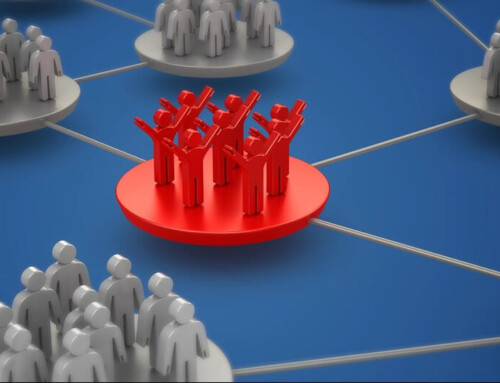The results of research conducted by the University of California, Irvine, Paul Merage School of Business, and published in Organization Management Journal, showed that rude behavior has significant negative impacts in the workplace:
- Recipients of rude communication perform more poorly.
- Rudeness can set off a chain reaction that starts with a manager who experiences it from their boss and then it rolls downhill when that manager mistreats their own employees.
- Employees on the receiving end of rude communication are more likely to judge their coworkers harshly.
- Rudeness that starts at the top with leadership trickles down throughout the entire organization.
Source: (1)
Some managers might appear to be rude but behind it lies the best of intentions. How can this possibly be true? In the past, aggressive leaders were viewed as stronger than their gentler and more empathetic counterparts. The modern definition of a good leader disagrees with this viewpoint. Sadly, not every leader or manager is aware or trained to understand the difference between an assertive yet empathetic leader versus an aggressive and rude leader.
Then there are the challenges that arise from properly managing rude employees. It is easy to see why some leaders are at a loss about how to effectively correct coarse behavior. They might have questions like:
- “How assertive should I be with constructive feedback and correcting rude behavior?”
- “What methods work, and what methods only incite the culprit of rude behavior?”
- “How might correcting a rude employee affect the perception that my other employees have of my leadership skills?”
These are all perfectly reasonable questions. Answering them starts with understanding some of the reasons why rudeness might occur in the workplace.
TYPES OF RUDE BEHAVIOR
Rudeness can exist in any environment in which people interact. The workplace is no exception. In fact, it might be even more vulnerable to this behavior, considering the stress and pressure that work can place on people. That said, some types of rude interactions are more common in the workplace than others.
Intolerance of Diversity
People are diverse in a large variety of ways including:
- Age
- Culture
- Education
- Political beliefs
- Spirituality
- Race
- Sexuality
- Gender identity
The list goes on and on. Conflict can arise if one employee or a group of employees does not respect a coworker’s differences.
Let’s talk about a couple of different scenarios. Abe’s work ethic places a career over a personal life. He favors face-to-face communication and prefers working independently. Ellen, on the other hand, enjoys teamwork and collaboration, uses all kinds of methods of interaction, and values a work-life balance. Both people are hardworking but have different interests and motivators. Rudeness could be perceived when one person doesn’t understand their own biases or is unaware of their differences.
Another scenario is where a wrongdoer uses rudeness to lash out at a target. This wrongdoing employee uses rude communication as an indirect way of expressing their disapproval of the targeted employee. This behavior is not only demoralizing; it is also undesirable and unacceptable. Furthermore, if management does not take a stand against the wrongdoer, it sets an ugly precedent for the rest of the team.
Abuse by Customers
The adage “The customer is always right” does not apply to abusive behavior directed at an employee. While most customers behave reasonably, a few will test the limits of how rude they can be to an employee who is attempting to help them. This behavior can range from subtle jabs and a raised tone of voice to outright profanity, derogatory personal insults, and yelling.
Abuse of an employee by a customer should never be dismissed as a necessary evil of providing good customer service. No worker should feel like they need to endure disrespect to protect the company’s good name. Employees who are pressured to do so are more likely to quit, snap back at rude customers, or take their frustrations out on their coworkers.
Ignoring a Coworker
Working alongside adults does not guarantee that everyone will behave in a mature way. Petty squabbles can break out and cause disharmony. An equally harmful scenario is one employee blatantly ignoring another for any reason.
When one teammate puts another on ice, it can seriously hamper efforts to complete projects. After all, most projects require the concerted effort of the team working together to a certain extent. Whether the involvement is great or minimal, a lack of interaction between two employees brings progress to a screeching halt.
Similar behaviors that are equally as harmful include constantly interrupting or talking over a coworker, jeering at them, or otherwise demoralizing them.
In addition, the ignored teammate might start to feel resentful and exhibit their own rude behavior in response. They might lash out at the coworker ignoring them, other teammates, their manager, or all of the above. Or the targeted employee might start to disengage from their job altogether.
Using Crude Language
Speaking or writing in a crude way encompasses everything from dirty jokes to using profanities. Regardless of the details, if the verbiage is potentially offensive, it should not be used in the workplace. Crude language is not only unprofessional, but it can also make employees feel uncomfortable around their teammates. Plus, if an employee is focused on how offended they feel instead of on their work, it could adversely affect their productivity.
Harassment or Abuse by Co-Workers
This type of rude behavior consists of harassment or abuse. Forms of this behavior like sexual harassment or threats made to safety can quickly escalate and cause a downright dangerous situation.
A critical part of your job as a leader is making your employees feel safe and respected. If this type of behavior is brought to your attention, it is imperative to act immediately. This could mean anything from taking disciplinary action to getting local law enforcement involved.
5 WAYS TO CORRECT RUDE BEHAVIOR
While correcting rude behavior in the proper way can seem challenging, keeping the following approaches in your leadership tool belt helps greatly.
1- Listen to Both Sides Before Acting
Human beings are complicated, and things are not always as they appear. For these reasons, you should always listen to both sides before deciding how to handle an allegedly rude employee.
Keep in mind that the recipient might or might not be an innocent victim. You need to rule out any wrongdoing on their part. You can be far more effective as a leader if you get to the root of the problem and learn the entire story before proceeding with a course of action.
2- Address the Issue Swiftly
Once rude behavior has been brought to your attention, or you notice it yourself, you must never allow it to go unaddressed. Doing so portrays the idea that your employees can get away with mistreating their coworkers. Addressing it does not mean you need to formulate a solution immediately; rather, it simply means that dealing with the situation is high on your priority list.
3- Speak with the Involved Parties Privately
Public shaming on any level is never an acceptable way to handle a rude employee. Neither is speaking to them and their target at the same time. Instead, speak to each involved party privately and one-on-one. Doing so not only demonstrates respect for each person but also allows them to speak freely and without interruptions.
4- Hold the Offender Accountable
The course of action you take will depend on the severity and nature of the offense, but you must hold the offender accountable after speaking with them. Otherwise, they might feel like they have permission to continue the rude behavior. By demonstrating that actions have consequences, you will show the employee that you mean business.
5- Set an Example
People in leadership positions are not excused from treating employees and colleagues with respect. If you discipline one of your employees for being rude, and later you are rude to a coworker, some of your employees might take their cue from your actions. Give every person you work with respect, regardless of whether they sit above or below you on the organization’s hierarchy.
FOSTER AN ENVIRONMENT OF MUTUAL RESPECT
As a leader, it is up to you to take the lead – pun intended. You set the tone for your workplace’s environment. By taking a stand against rude behavior, you make it clear to employees that they are valued and respected. Workers who feel valued, safe, and free from distractions are more likely to perform well, get along with their teammates, and stay with the company.
If you want to ensure your next business event makes a positive impact on company culture and workplace morale, contact Gavel International! We have years of experience organizing corporate meetings and can help your organization achieve this goal.
_______________________
SOURCE(S):
1 https://merage.uci.edu/news/2023/12/Rudeness-in-the-Workplace-How-It-Impacts-Performance.html
This article was last updated on April 24, 2025
- Take Action on Organizational Values to Improve Company Culture - September 8, 2025
- Discover Hidden Gems in the Art, Culture and Outdoor Attractions in Dallas, Texas - August 25, 2025
- Create High-Quality Content Your Audience Truly Values - August 11, 2025






